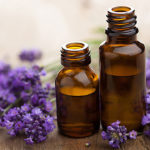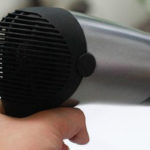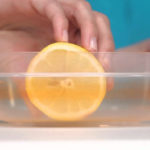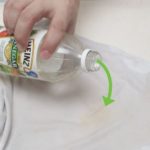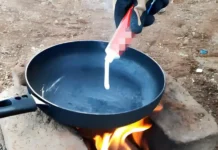Reasons for green garlic pickle
Garlic pickles in vinegar are very familiar and easy to make, but many garlic pickles turn green the next day, which is very unappetizing.
The reason for garlic turning green is oxidation. It is mainly due to young garlic, which still has a lot of garlic sap, so when it comes into contact with air and vinegar, it undergoes oxidation and turns green. Therefore, when making garlic pickles in vinegar, it is necessary to know how to prepare and handle them in order to overcome this problem.
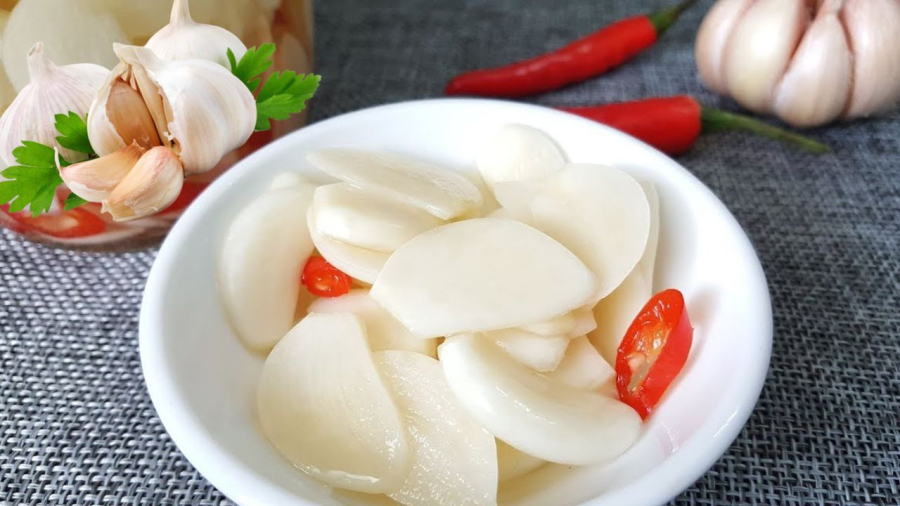
Garlic turns green due to young garlic or unpeeled garlic
Preparing ingredients for garlic and chili pickle
Choose 200g of garlic or more depending on the size of your family and the quantity you want to pickle. If you want the pickled garlic to be crispy and white, choose old, firm garlic. Small garlic bulbs taste better than large ones, but they take longer to peel and prepare. Purple-skinned garlic is tastier than white-skinned garlic, and single clove garlic is tastier than multiple clove garlic.
1 bottle of vinegar (500ml) or increase it according to the amount of garlic. There are many types of vinegar available on the market. It is recommended to choose high-quality vinegar that is not dark in color and has a refreshing taste. Cheap vinegar is usually dark and has an unpleasant taste.
Fresh chili peppers
Salt
Water
Glass jars or ceramic jars. Avoid pickling garlic in plastic jars as they may react poorly.
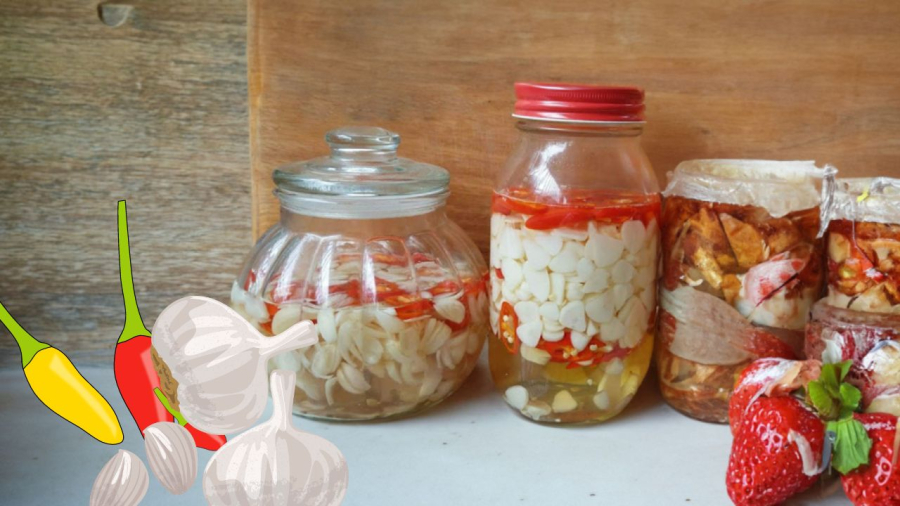
Preparation will help the pickled garlic crispy and white, avoiding the green color
Preparing garlic to avoid turning green
In addition to choosing good quality garlic, preparing the garlic is essential to avoid it turning green.
Peel and slice the garlic cloves to a suitable thickness. Rinse the garlic thoroughly and soak them in diluted saltwater, adding a little sugar for about 30 minutes. Then drain the water and soak the garlic again to prevent it from turning green. Soaking and rinsing the garlic multiple times helps to reduce the garlic sap, resulting in no green color. You can soak the garlic 2-3 times in salty water to make the garlic pickles in vinegar without turning green.
To sterilize and prevent spoilage when pickling, you can blanch the garlic cloves in boiling water, quickly blanching them and then letting them drain.
Rinse the chili peppers thoroughly and remove the seeds before slicing. The amount of chili peppers depends on the preference for spiciness. You can add chili peppers or not depending on your family’s taste.
Boil the vinegar together with water and add a little sugar to make it boil and dissolve. You can skip the boiling step, but boiling the vinegar helps to remove the dark odor and avoid clouding when pickling. Adding sugar to the vinegar makes it lighter and faster to eat. You can also choose to directly pickle with 100% vinegar without adding water or sugar.
Pickling the garlic in vinegar:
After draining the garlic, place it in a glass jar. Remember to wash the glass jar with boiling water and let it dry. Place the garlic and chili peppers in the glass jar.
When the vinegar and sugar mixture has cooled completely, pour it into the jar with garlic and chili peppers. Cover the jar and store it in a cool place. It can be used after 2-3 days. Avoid storing the jar of pickled garlic in a hot place or under direct sunlight, as this will cause them to become sour quickly and the garlic will not be crispy.
When serving, use a clean spoon to scoop out the pickled garlic, avoiding using a spoon that has been used for eating to scoop from the jar, as it will cause clouding.

























